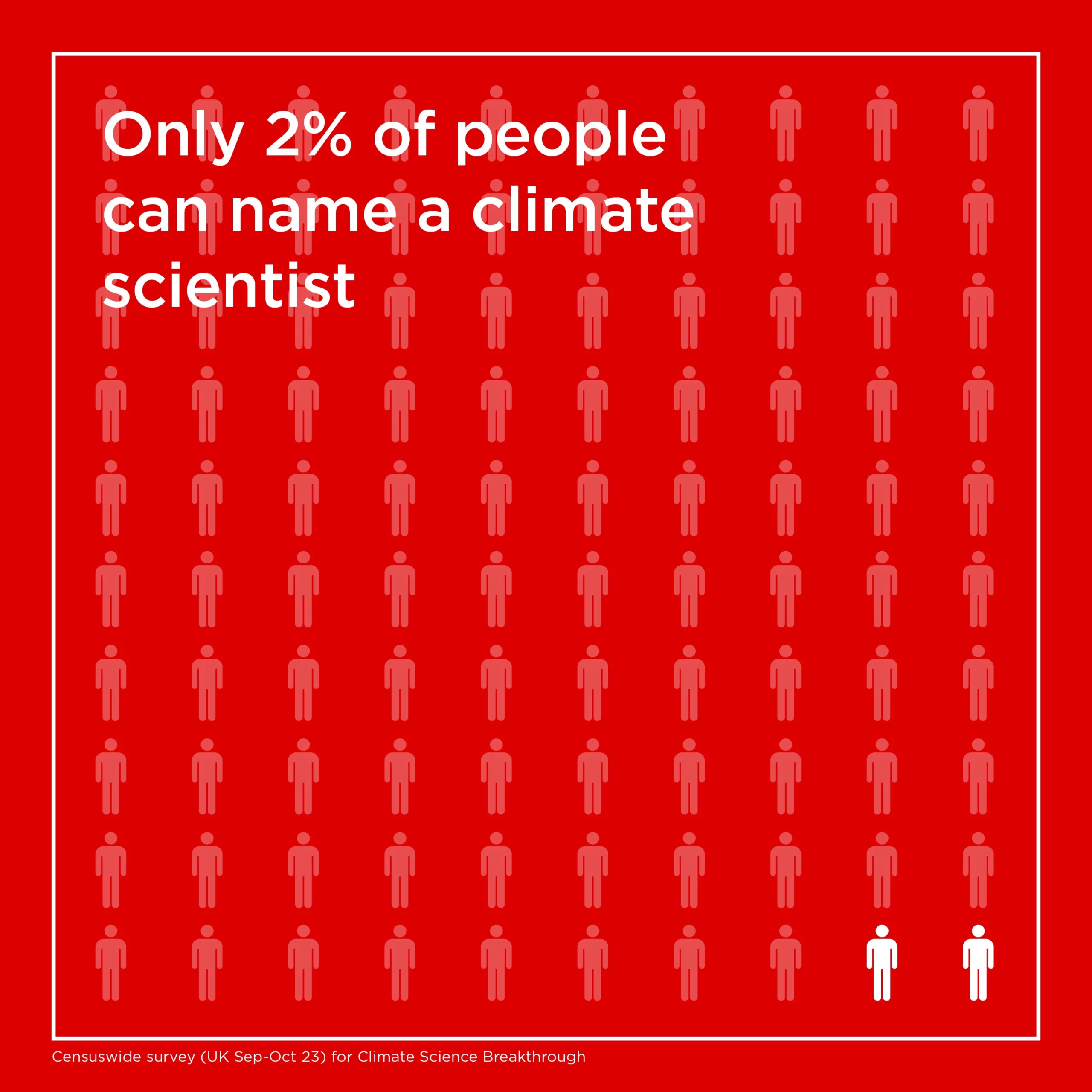The British campaign „Climate Science Breakthrough“ reached millions of viewers – using the foul language of famous comedians. Climate campaigner Nick Oldridge on the ingredients for creating viral climate content.
The unlikely heroes of climate communication

Your videos, in which famous comedians “translate” the messages of climate scientists, reached millions. Should Taylor Swift date a climate scientist instead of a football star?
Imagine if Taylor Swift started talking about the climate crisis! She has such power. When it comes to the US election, she could really influence the outcome. When we launched the first films, we didn’t quite reach Taylor Swift, but we did get interactions from stars such as Ellie Goulding and Thom Yorke, from the band Radiohead. We also reached Chris Packham, a popular TV presenter, and one of our biggest sports commentators, Gary Lineker. Our films got millions of views thanks to these people.
We started making these films with comedians not just because they’re funny, but because they have public profiles. People need to hear from public figures they trust talking about the climate crisis like it’s a normal thing, not a niche specialist thing. So yeah, come on, Taylor Swift. That’ll be fantastic.
The videos tell a simple narrative, with a clear villain – the fossil fuel industry. Were there other story arcs you explored?
Our videos highlight the fossil fuel industry as the primary antagonist, but always end on a hopeful note, showing solutions like renewable energy. The public simply have too many messages coming at them every day. So we decided to stick to this message. It’s simple and it’s powerful and it seems to engage people.
Outrage serves as a powerful tool to engage people, directing their attention towards the fossil fuel industry as villains while also highlighting actionable solutions on our website. The challenge lies in providing a clear call to action without overwhelming individuals with a sense of personal responsibility. We aim to empower people to contribute to societal shifts collectively, inspired by other campaigns, such as „Make My Money Matter.“ Our goal is to fuel engagement, allowing individuals to leverage their influence wherever possible.
You present quite a bit of negative information in the videos. Are you worried that some viewers will be overwhelmed by climate anxiety?
The comedy aspect was crucial in delivering the serious messages effectively. It helped us navigate sensitive topics like mass migration. There is a common feeling in the climate community that we must not scare people. We can’t be too negative, and we shouldn’t scare them too much, because then people just switch off. However, we felt it was vital that people understood the full threat of climate change, which includes food shortages, financial collapse and societal breakdown. While many acknowledge that climate change is happening, few understand its urgency.
We’ve covered communicating climate science through classical music, graffiti art and sci-fi dystopias. What is special about using humor?
Research shows that humour helps people digest information. Comedians can deliver difficult information in a way that others can’t. They can cover sensitive or risky topics with ease, and they can handle heckling. They don’t mind standing up and saying, „Come on, you can throw everything you’ve got at me“. Comedians also resonate and connect with us because they reflect our position in culture, in society. Similarly, there is evidence to show that doctors who connect with their patients are more effective at increasing the acceptance of their advice. Comedians, like these doctors, connect with us and make information more relatable, increasing the likelihood of action.
What was it like to merge the marketing perspective and the science perspective with this project?
I teamed up with Utopia Bureau, a climate communications lab. They have a background in advertising and are using their skills to finding innovative ways of dealing with the climate crisis. Together we recognised that traditional methods of communicating the climate crisis weren’t effective enough, so we’re exploring different approaches. It’s important to be methodical in our thinking, given the urgency of the crisis. Finding the right balance between science and communication is essential, and it will probably take several creative experiments to succeed.
How did you fund Climate Science Breakthrough?
I personally funded the project, with some help from crowdfunding for our last film. As a climate campaigner and a father I couldn’t stand by and watch anymore. I understood that our current trajectory is threatening the financial security I hoped to leave my children. This led me to start spending some of that money now.
At first I was reluctant to share this aspect of my story. But I think many others may be facing similar dilemmas about securing their family’s future in the face of climate uncertainty. Some people are lucky enough to have savings and money they’d like to leave to their children in the future. But if you play out the current climate scenarios, you need to spend that money now, not let it evaporate.
How did you get the scientists and comedians on board?
Getting the climate scientists on board was relatively easy; almost all of them agreed to participate. Using our contacts in the scientific community helped. The real challenge was getting the comedians on board, especially after Covid when they were busy touring. The process became easier once we secured our first comedian, Kiri Pritchard-McLean, whose involvement attracted others such as Jonathan Pie. Managing the comedians‘ busy schedules proved to be the biggest hurdle.
What advice do you have on integrating humor into climate communication?
It requires collaboration with highly creative people: script writers, directors, the filming crews. At each level, we were working with professionals who do this for a living and are good at what they do. We needed to be quite brave because most of the resources that we had went into the making of the film. We didn’t have loads of money for promotion. So we had to make an impact. That’s where the swearing by the comedians came from. We needed it to sound like the language of an emergency, as someone once said, I’m sure there was quite a lot of swearing on the deck of the Titanic as it went down. But we also needed it to go a bit viral. Can you imagine putting all this effort into a film and not many people watching it?
Ultimately, there’s no magic formula, but leveraging the expertise of funny, camera-savvy individuals and professionals at each level of production is key.

So, how do you create viral climate content?
Creating viral climate content is a challenge. My daughter will show me a viral reel of a cat that’s had millions of views. It’s quite unnerving sometimes to see something so innocuous going around the world. We didn’t rely on big influencers for the campaign because of the potential costs, but we did get a lot of support from individuals and organisations in the sustainability sector and informal climate communication networks. I still don’t have an answer to what the magic is. It’s very difficult to get it right.
Which social media platform has been most successful in the campaign?
Among our social media platforms, Facebook presented the most challenges, to the extent that we don’t really use it now. However, platforms like Instagram and LinkedIn have been more successful. Interestingly, as X has become more problematic, others, like LinkedIn, have gained popularity. LinkedIn, in particular, has become really popular, with minimal negativity, making it quite enjoyable to engage with.
One TV show host called “Climate Scientist Breakthrough” a very “British” thing. Do you think the format would work in other countries?
The sarcastic and dry British humour may be unique, but I believe the format can be adapted for other countries. Humour can be translated to different cultural contexts. We’ve had interest from several countries including Australia, New Zealand, Germany and South East Asia. We’re currently exploring the possibility of producing similar content in the US, working with American climate scientists and comedians. We want to gauge its success in the US before expanding to other countries.







